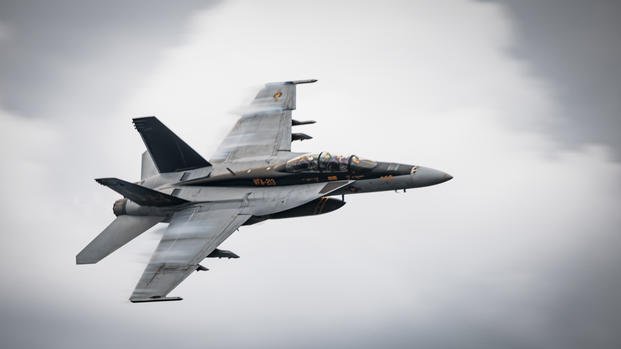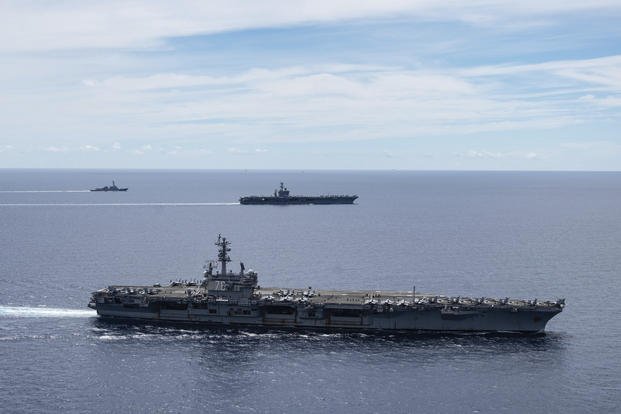All five service members aboard two U.S. Navy aircraft are safe after the helicopters went down Sunday in the South China Sea minutes apart.
A U.S. Pacific Fleet spokesperson confirmed to Military.com that a MH-60R Sea Hawk helicopter assigned to the “Battle Cats” of Helicopter Maritime Strike Squadron 73 went down around 2:45 p.m. local time while operating from the aircraft carrier USS Nimitz (CVN 68). Search and rescue teams from Carrier Strike Group 11 pulled all three members from the water.

About thirty minutes later an F/A-18F Super Hornet assigned to the “Fighting Redcocks” of Strike Fighter Squadron 22 also crashed. Both aviators ejected and were rescued by carrier recovery crews.
“All personnel involved are safe and in stable condition,” Pacific Fleet said in a statement. “The cause of both incidents is currently under investigation.”

“Bad Fuel” Maybe The Culprit
Speaking aboard Air Force One on his way to Tokyo, Japan, for a regional summit on Indo-Pacific security and trade, President Donald Trump told reporters “bad fuel” may have caused the crashes.
Pacific Fleet declined to address the president’s remarks and referred all questions to the White House, which at press time had not responded to Military.com’s request for comment.
The Navy says investigators are still gathering information and have not yet determined whether the two mishaps are related. Flight operations aboard Nimitz continue.
The carrier and its air wing are part of Carrier Strike Group 11, now deployed in the South China Sea—a flashpoint where U.S. and Chinese forces often operate in close proximity.














